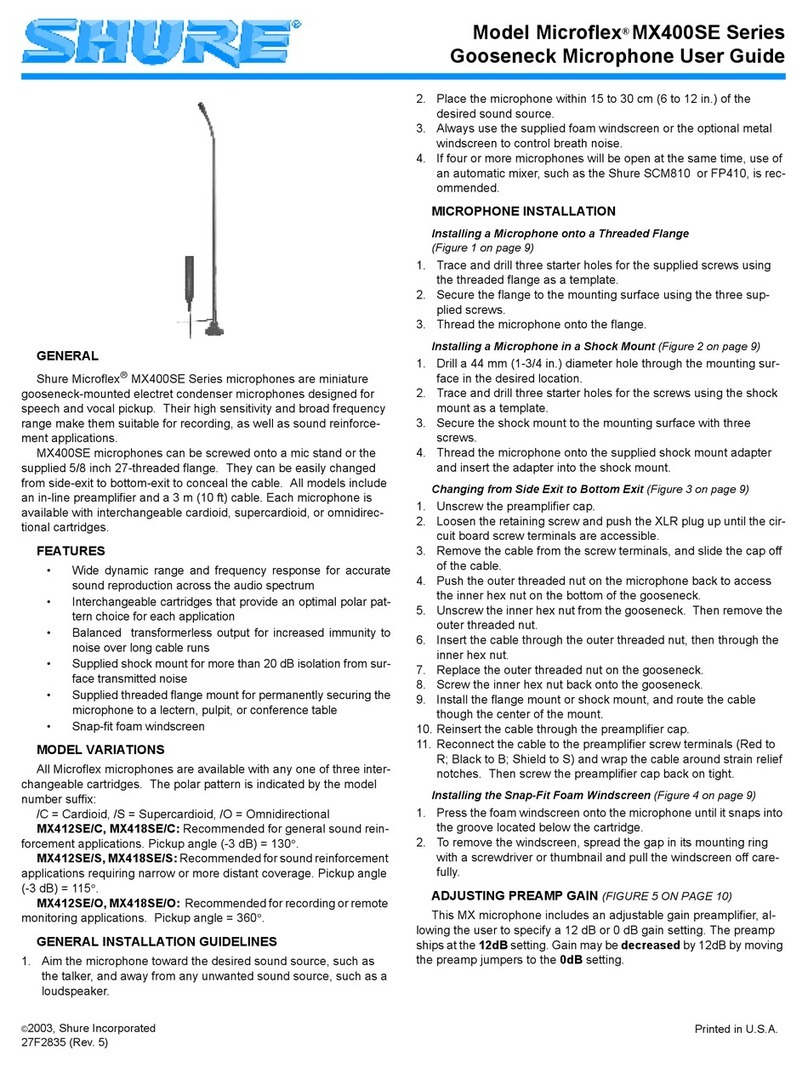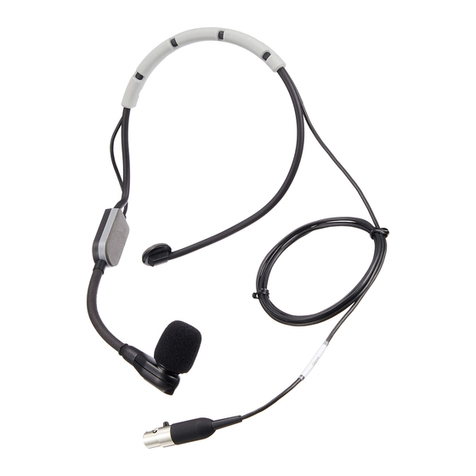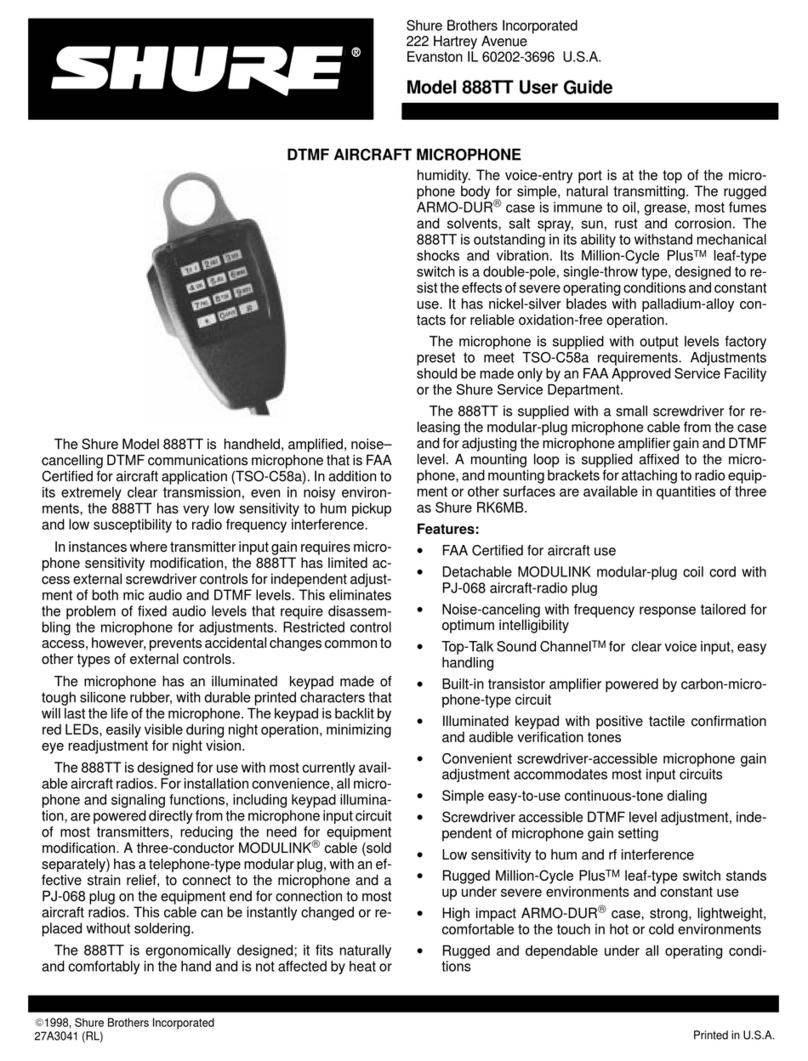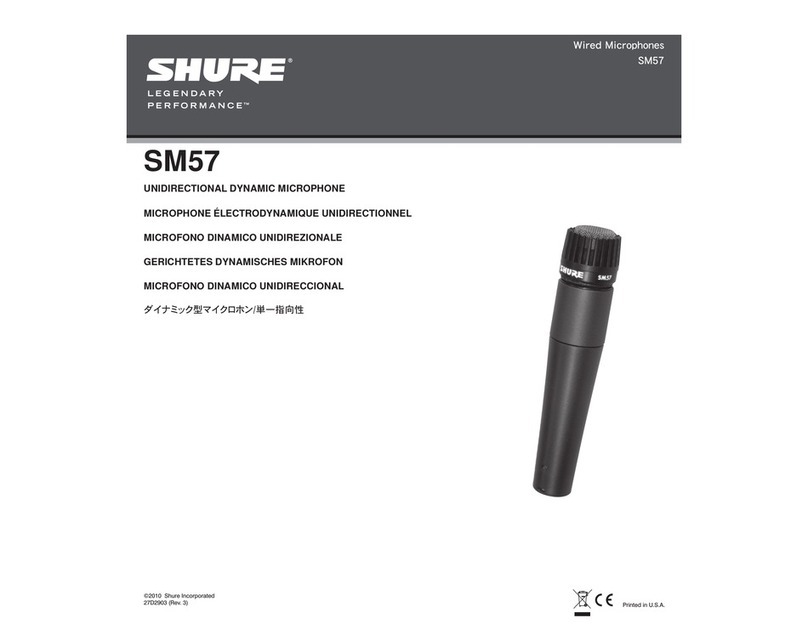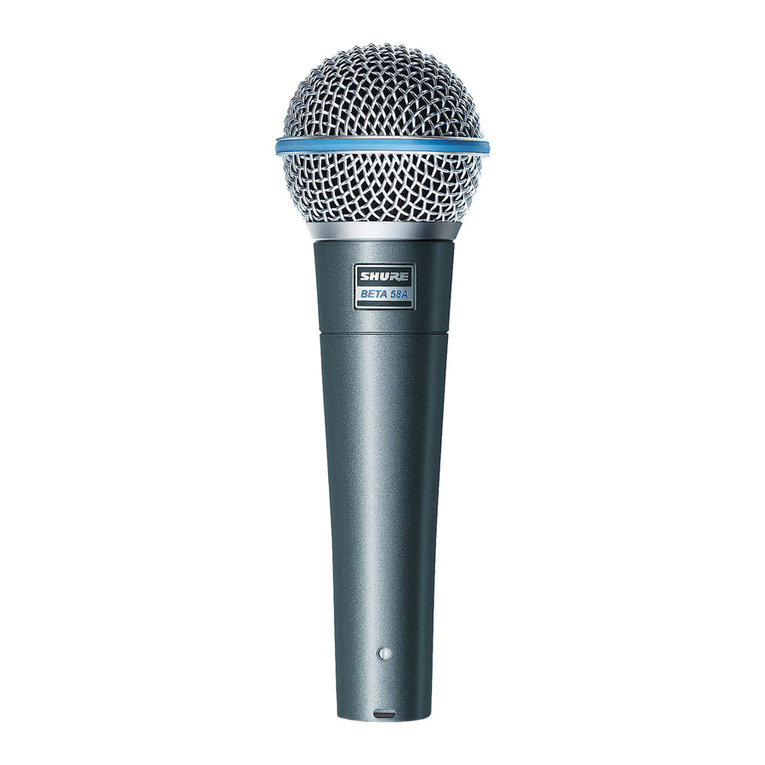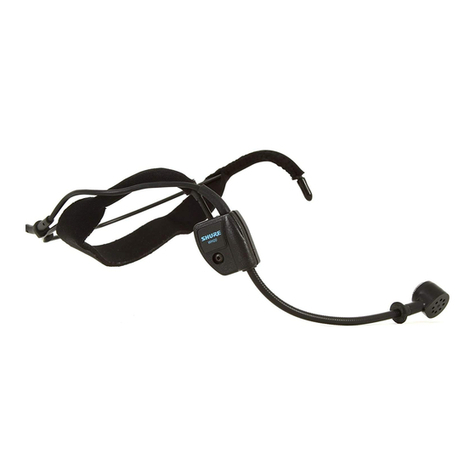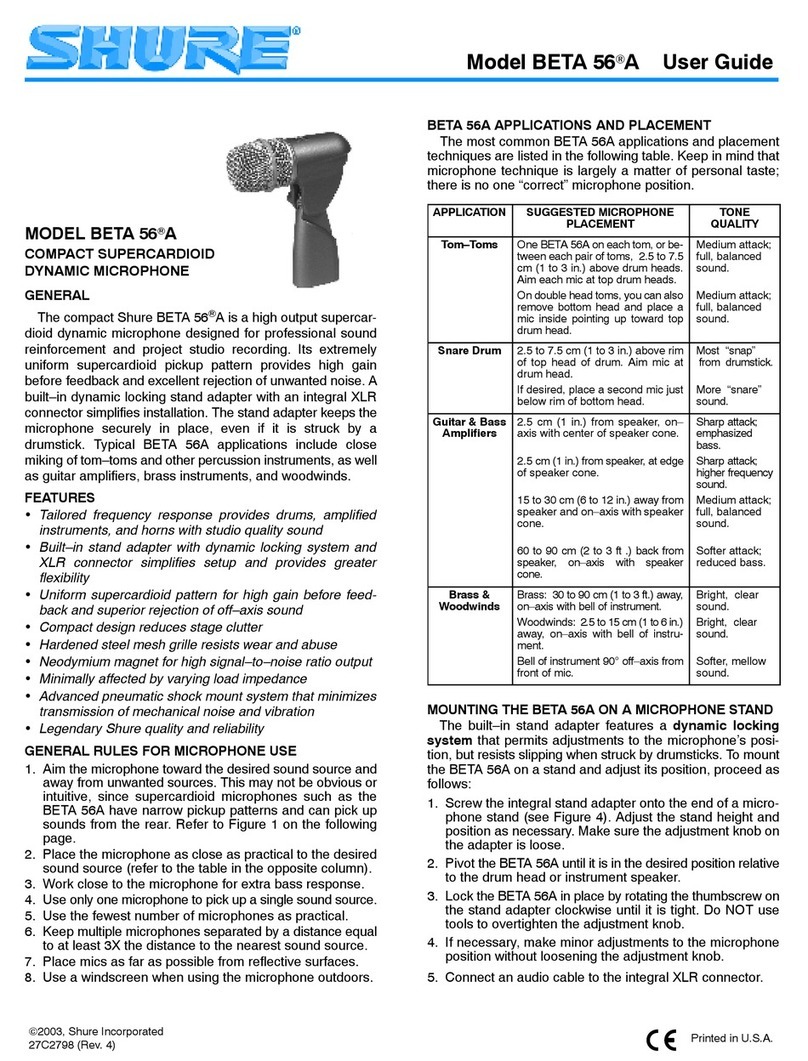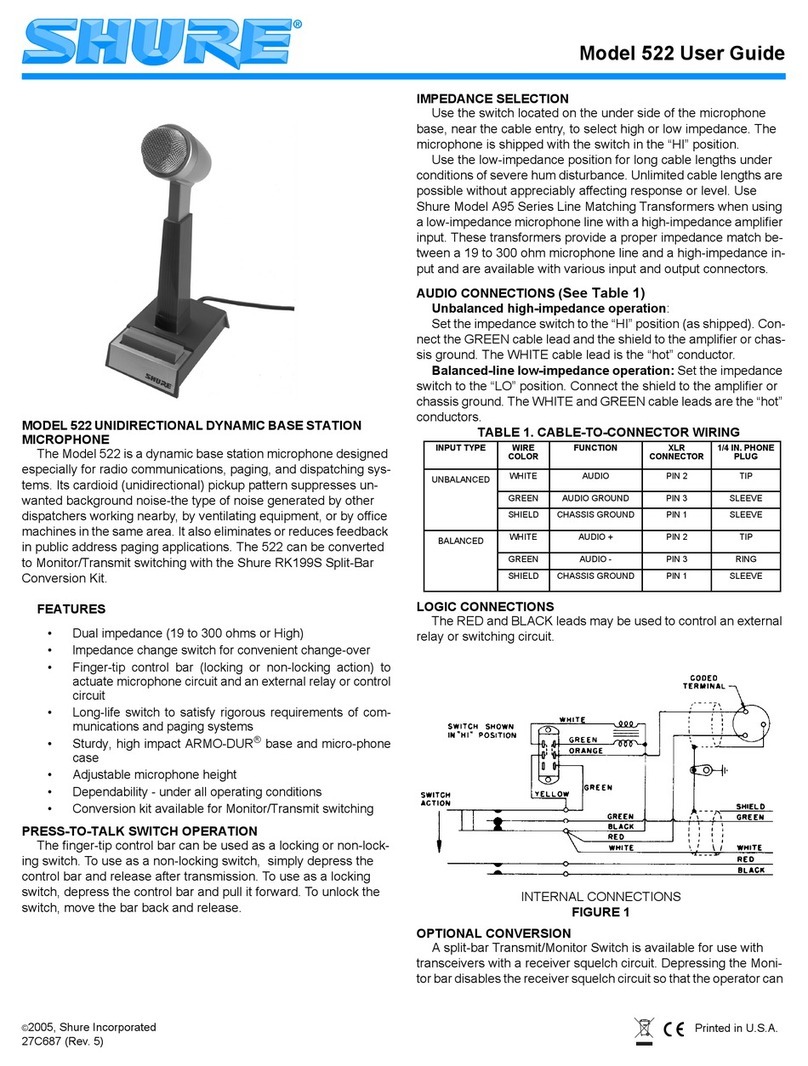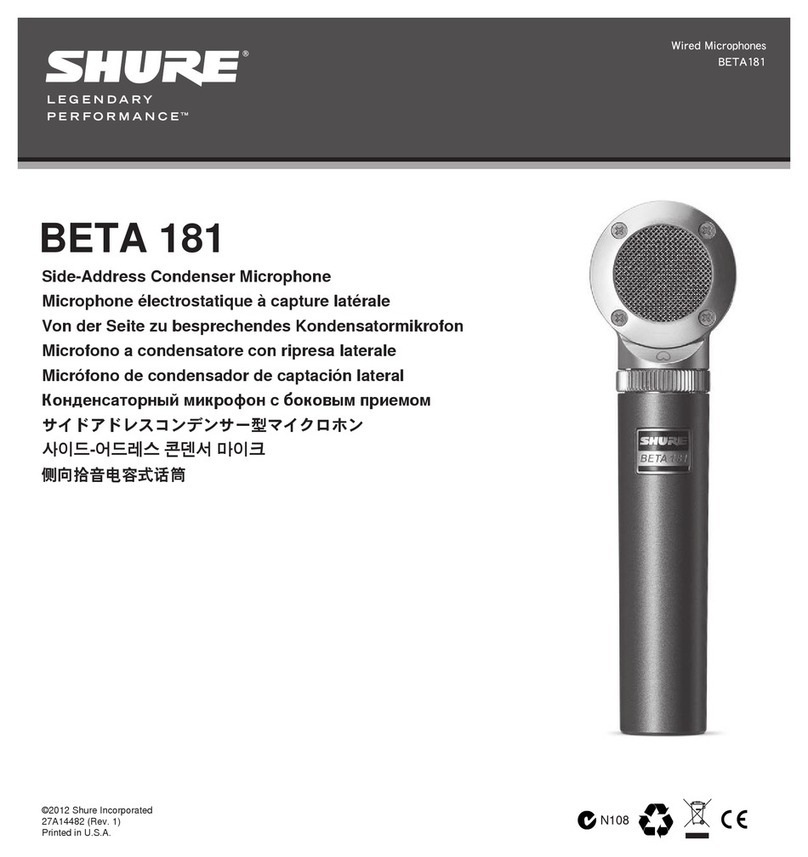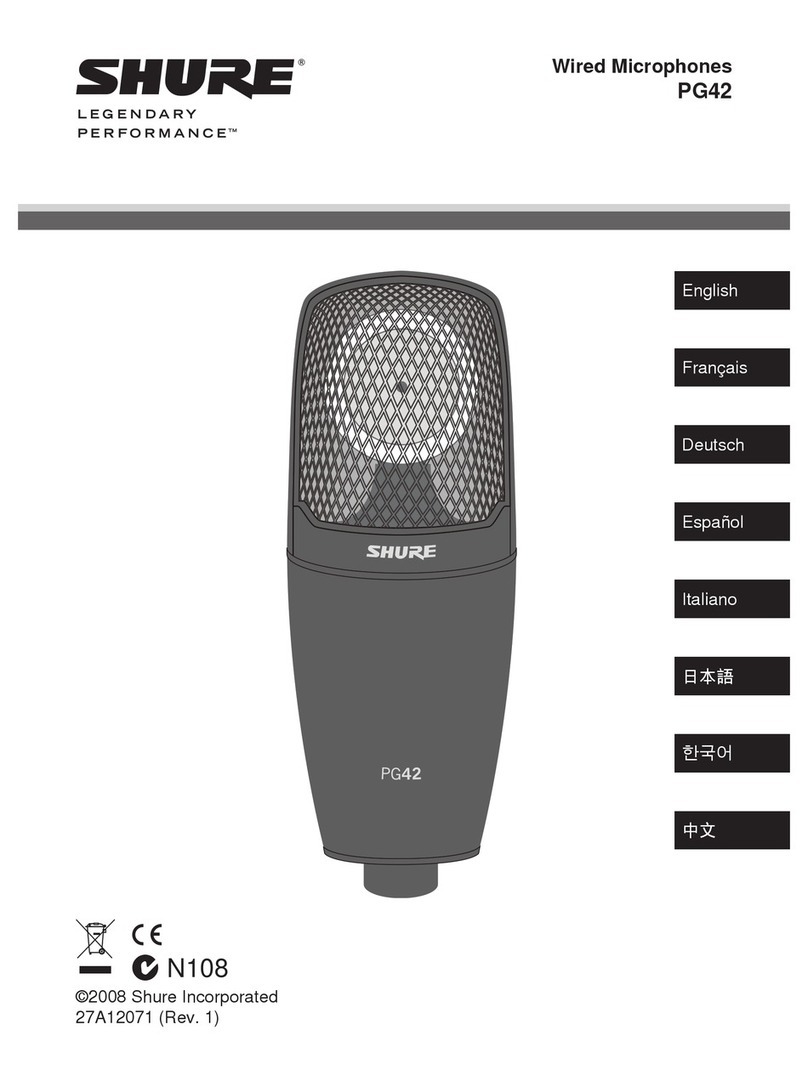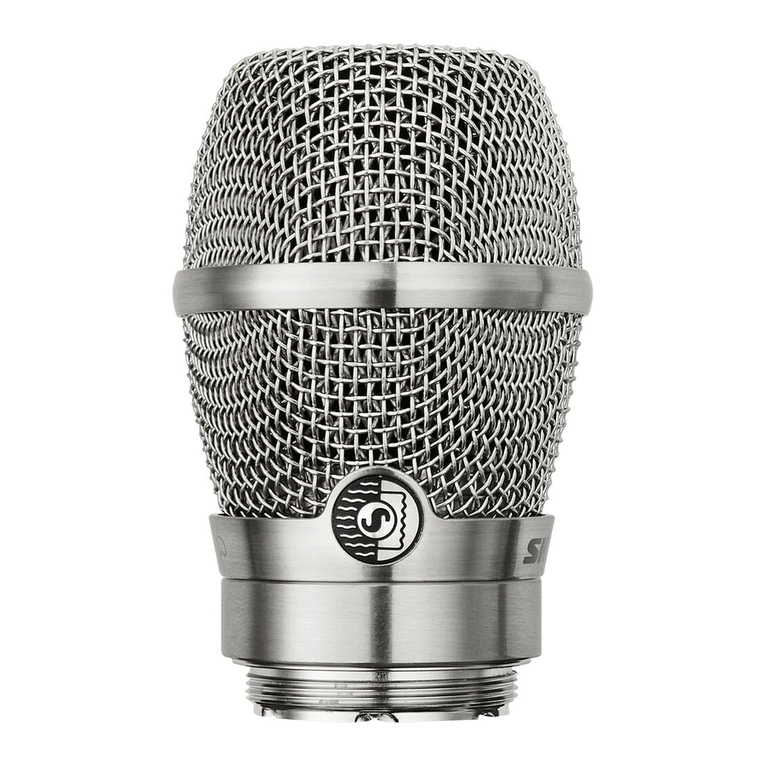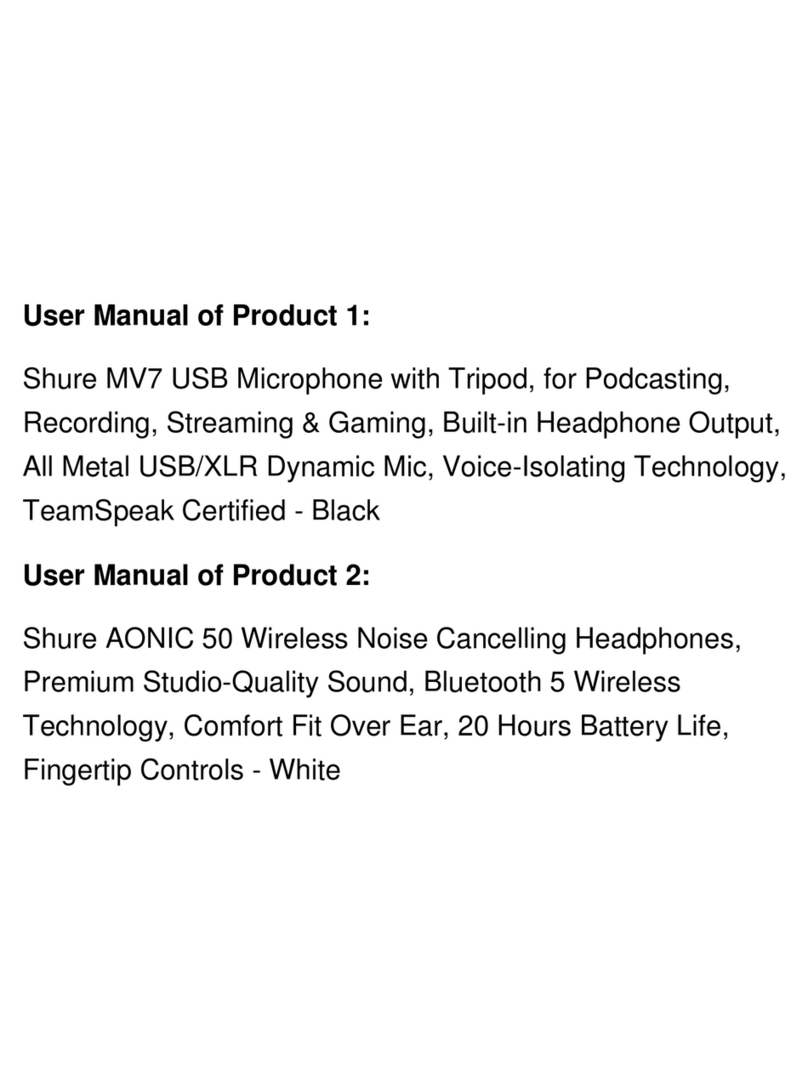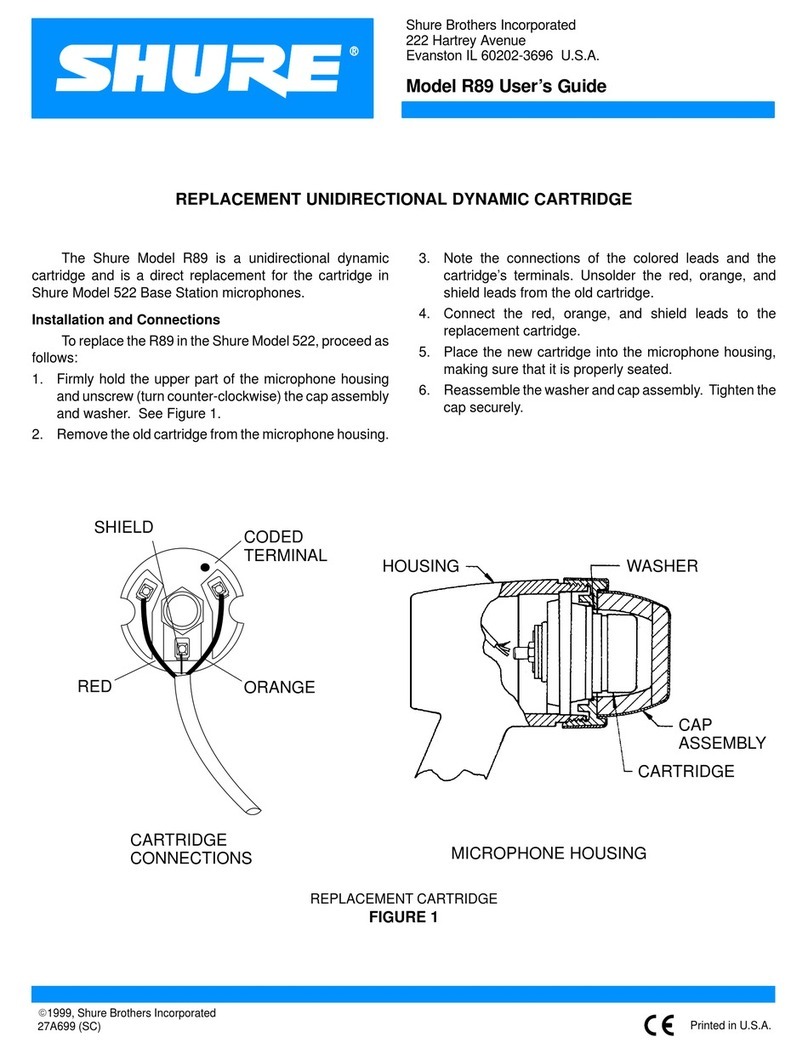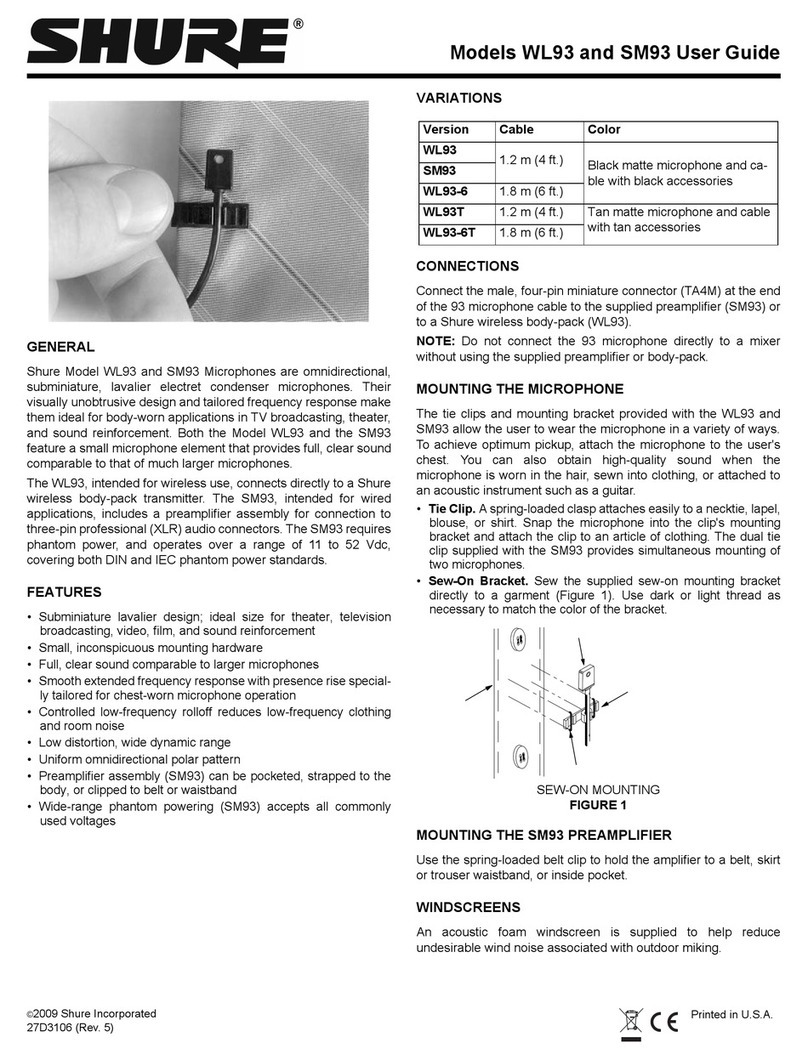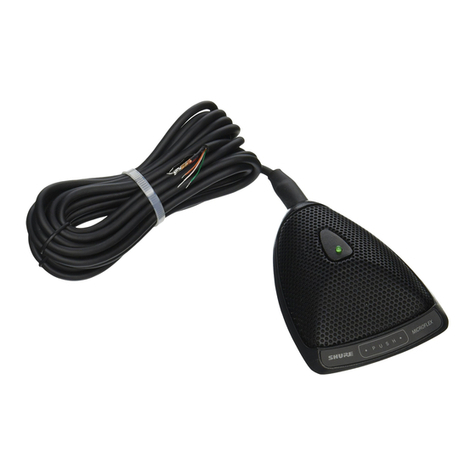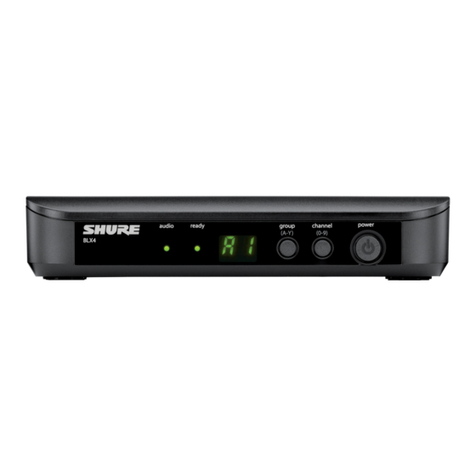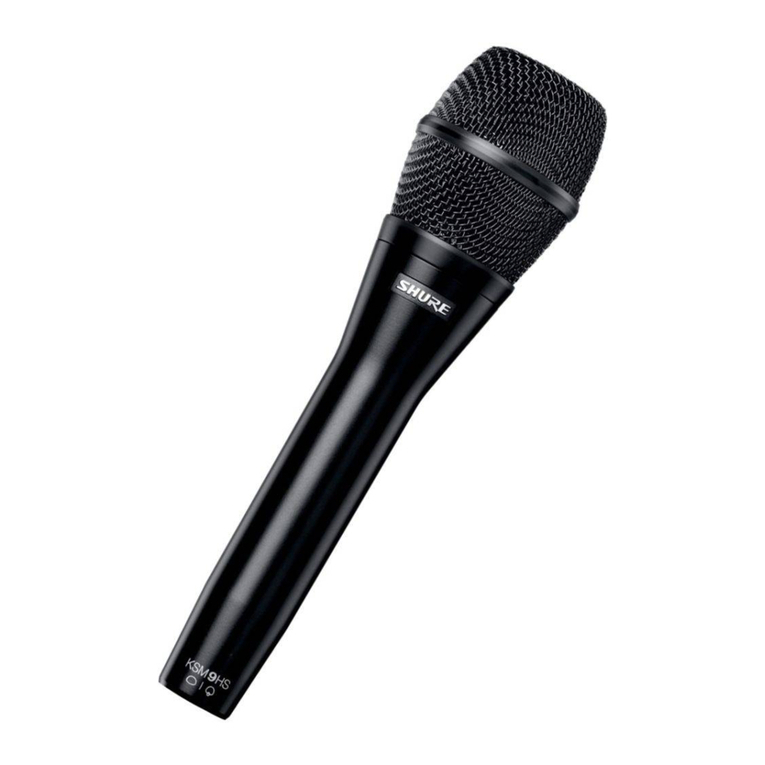
Model WCM16 User Guide
MODEL WCM16 ISOMAX* HEAD-WORN CONDENSER MICROPHONE
GENERAL
The Shure Model WCM16 head-worn electret condenser
microphone is intended for wireless use by performers, lec-
turers, and others who require the highest quality voice pick-
up with maximum mobility. Its wide frequency response, low
RF susceptibility and reliable operation at temperature and
humidity extremes make the WCM16 suitable for virtually
any vocal application. When used with the Shure Body-Pack
Transmitters, the performance of the WCM16 closely resem-
bles the finest conventional vocal microphones.
Miniaturized active circuitry included in the cartridge as-
sembly provides equalization that tailors the low-frequency
response to resemble the warm proximity effect of larger vo-
cal microphones. Becauseof this low-end response, it is not
necessary to position the microphone directly in front of the
mouth, thus avoiding much popping and breath noise, even
without the supplied foam pop screen.
The microphone's hypercardioid unidirectional pickup
pattern provides maximum isolation from ambient noise and
from adjacent sound sources such as musical instruments,
loudspeakers and other performers. This permits higher
gain-before-feedback without loss or masking of vocals.
FEATURES:
• Extra lightweight, adjustable headband stays secure
and virtually disappears while being worn
• Response comparable to the finest conventional vocal
microphones
• Hypercardioid polar pattern provides maximum isola-
tion from vocalist's own instrument and those of other
performers
• Uniform polar pattern at all frequencies for maximum
gain before feedback
• High input clipping level eliminates overload distortion
• Supplied acoustic foam pop screen
• Reliable at temperature and humidity extremes
WEARING THE MICROPHONE HEADSET
1. Place the microphone on the user's head so that the
large diameter band is horizontal across the back of the
head. The band may be completely hidden under the
hair. The ends of the headband should fit comfortably
in front of the ears. Extend or retract the adjustable
headband (see Figure 1) to achieve this result.
2. For maximum gain before feedback, carefully extend or
retract the boom (see Figure 1) so that the microphone
grille (silver side) is within 40 mm (1-1/2 in.) of the left
corner of the mouth. It may be necessary to bend the
headband tube just in front of the left ear for optimum
microphone positioning. A slight bend downward and/
or away is usually sufficient.
NOTE: The headband tubing will not withstand
repeated bending, so make this adjustment only once,
if necessary.
3. If breath noise or popping is audible, install the sup-
plied pop screen so that the red dot on the pop screen
corresponds to the location of the microphone grille.
POSITIONING THE MICROPHONE PICKUP
The hypercardioid unidirectional pickup pattern of the
WCM16 has maximum rejection of unwanted sound sourc-
es at about a 110°angle each way from the front axis of the
microphone (see Figure 1). Directly to the rear of the micro-
phone (at 180°) there is as little as 6dB rejection-not much
less pickup than at the front of the microphone (at 0°).
Sound sources that may cause feedback (such as moni-
tor or P.A. speakers) or sound that you do not want to pick
up with the WCM16 (such as percussion instruments or oth-
er performers) should NOT be placed directly to the rear of
the microphone. It is better to adjust positioning so that un-
wanted sound sources are located at the 110°maximum re-
jection points. Note that when wearing the headset the rear
of the microphone points out towards the wearer's left.
1.5 M
(5 FT)
POP SCREEN
CARTRIDGE
ADJUSTABLE
HEADBAND
ADJUSTABLE
BOOM
12.7 MM
(1/2 IN.)
57.2 MM
(2-1/4 IN.)
CABLE
TA4F
CONNECTOR
PARTS OF THE WCM16 HEAD-WORN MICROPHONE
FIGURE 1
Printed in U.S.A.©2006 Shure Incorporated
27D2631 (Rev.6) *WCM16 is manufactured by Countryman Associates
ISOMAX is a trademark of Countryman Associates
